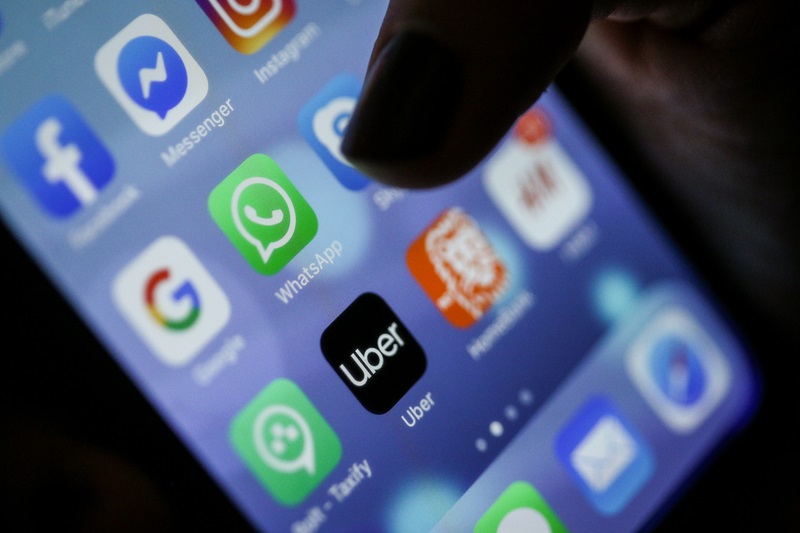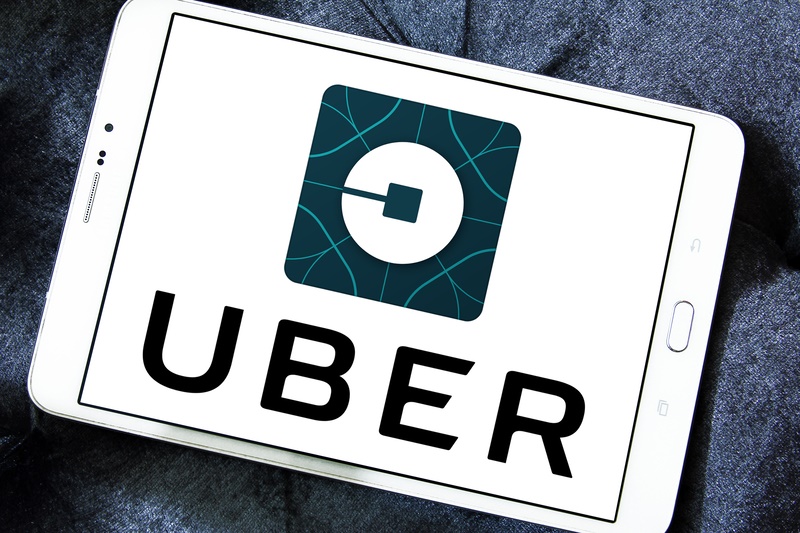
The pledge by Uber to operate a zero-emission fleet by 2040 is certainly eye-catching.
The ride-hailing giant says it will also switch completely to electric vehicles (EV) in US, Canadian and European cities by 2030.
It follows a similar commitment earlier in the year by rival Lyft to make all rides electric by 2030.
However, pressure group the the Sierra Club points out that ride-hailing generates 70% more pollution than the trips it displaces in the US.
Rebekah Whilden, campaign representative with Sierra Club’s Clean Transportation for All campaign, said: “While Uber’s commitment states that it will work with drivers to make the transition more cost-effective and profitable for them, we know that we can’t let up the pressure to see this commitment through in a way that benefits drivers. We need all hands on deck from companies to tackle pollution, combat the climate crisis, and commit to equitable labour standards.”
But to activists, Uber's public commitment is a victory of sorts - and is of course part of a wider awakening on the part of mobility providers that things need to change.
William Todts, executive director at green mobility pressure group Transport & Environment (T&E), welcomes Uber's announcement but also calls on “Europe's majors to show leadership”.
2030 goal
“We need all major cities in Europe to introduce zero-emission zones, new pop-up bike lanes and cycle-only corridors, whilst providing easy access to charging, at home, at work and wherever people park,” he adds.
Uber is not responsible for all of this but, as a high profile player in the industry, has a significant role.
“We can achieve this 2030 goal in any major city where we can work with local stakeholders to implement policies that ensure a fair transition to EVs for drivers," insists Uber CEO Dara Khosrowshahi.
The ride-hailing giant is now taking a series of actions which include the launch of what it calls Uber Green in more than 15 US and Canadian cities to help reduce emissions.
Uber Green allows riders to request a ride in an EV or hybrid vehicle. They will receive 3x Uber Rewards points for every trip taken compared to 2x points for a typical UberX ride.
It is also pledging more than $800 million in resources to help its drivers in the US, Canada and Europe transition to battery EVs by 2025.
“We’ll help drivers go electric more affordably through various market-based solutions, including a rider surcharge on Uber Green trips,” Khosrowshahi continues.
“And we’ll work with third-party experts in environmental justice, such as EVNoire and Grid Alternatives, to ensure that these resources reach drivers from underserved communities and those who’ve been disproportionately impacted by the pandemic.”
Rental collaboration
In the US and Canada, hybrid and EV drivers will receive an extra $0.50 directly from the rider on every Uber Green trip completed. Drivers operating a zero-emission vehicle such as a battery EV will receive the same incentive plus an additional $1.00 extra for each trip.
In a separate action, Uber is working with GM in the US and Canada and Renault-Nissan across cities in the UK, France, Netherlands and Portugal to extend offers on EVs to drivers.
It is also collaborating with car rental company Avis to help make it easier for drivers in the US to borrow a zero-emission vehicle.
“We’ve coordinated discounted EV charging around the world in locations where drivers most need it with BP, EVgo, Enel X, Izivia by EDF, and Power Dot,” Khosrowshahi elaborates.
“And we’re joining forces with emerging innovators like Ample, which offers a robotic alternative to EV battery charging, and Lithium Urban Technologies, which runs an electric fleet in India.”
However, Khosrowshahi recognises a “more robust collaboration” between industry and government is necessary to achieve a “fair transition for drivers”.
The firm is already taking steps to zero-in on the opportunities provided by electric mobility. In London, Uber drivers have completed more than one million journeys in EVs while a clear air plan in France includes a commitment by Uber toward EV purchases made by French drivers.
European roadmap
Uber is now unveiling a white paper to help build this progress across Europe. It includes a roadmap for partnering with public and private leaders in major European Union cities to achieve 100% all-electric on-demand mobility.
The roadmap includes input from the World Resources Institute, T&E, the Sierra Club, Grid Alternatives and EVNoire.

Elsewhere, Uber wants to expand its Nonstop Shared Rides carpooling product to more than 50 global cities in which Uber Pool is available.
“This feature prompts you after you request UberX to join a Pool trip headed in the same direction as your destination,” Khosrowshahi states. “You’ll be the last to be picked up and the first to be dropped off, all while saving cash.”
Uber halted Uber Pool in March to help flatten the curve during the coronavirus pandemic but hopes to expand the feature when it is safe.
In response to the pandemic, the company is to partner with public transit operators to avoid a return to traffic congestion.
“We’ll start by expanding our journey planning feature to six new cities, bringing the total to 40 cities globally by year’s end,” Khosrowshahi explains. “This means riders can choose their destination and see pricing options, real-time schedules, and walking directions to and from transit stations.”
White paper
Additionally, Uber has expanded in-app ticketing to more than 10 cities this year so people can purchase transit passes in its app. It has also redesigned its touchless ticketing feature to help transit agencies more easily integrate it into their cities.
A new app feature called Uber and Transit allows riders in Chicago and Sydney to combine UberX with walking directions and city bus, subway or train connection. It is powered through real-time transit information and Uber’s on-demand mobility network.
As part of the commitment, Uber has published a report to measure and report on emissions from the real-world use of its products.
The Climate Assessment and Performance Report analysed real-world data from nearly four billion rides on the Uber platform in the US and Canada from 2017 to 2019.
“Over the 2017-19 period, we estimate that platform-wide efficiency gains resulted in the avoidance of half a million metric tonnes of CO2 emissions and the use of 56 million gallons of gasoline by drivers,” Khosrowshahi reveals.
“We also found that a ride taken on the Uber platform is significantly less carbon-intensive than single-occupant driving (which makes up 40% of all road travel in the US).”
Other findings show Uber was more efficient in cities in 2019 as the carbon intensity of rides in its top 10 metro markets was 5.4% lower than the Uber average. Rides facilitated in California (Los Angeles and San Francisco) resulted in almost 25% lower carbon intensity than those across the US and Canada.
According to Khosrowshahi, drivers on the platform use more efficient hybrid vehicles six times more than average car owners, but the carbon intensity for rides taken with Uber is still higher than that of average-occupancy personal cars.
“Uber has joined the Science Based Targets initiative to ensure that we implement leading practices in emissions accounting, target setting, and transparency. And we’ll begin providing riders with information on the carbon impact of their travel, as well as tips for how to reduce it,” Khosrowshahi concludes.











